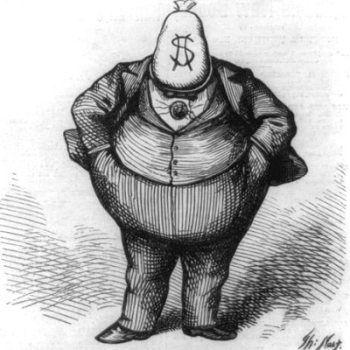Want to read something scary? Click over to the Federal Highway Administration’s National Bridge Inventory site and do a little reading on the state of America’s bridges.
The good news is that most of them are in pretty good shape. More than half. The bad news is that some of our bridges are in pretty bad shape. How many? Try 149,647 rated structurally deficient. And most of those are still in use.
Drive for a half an hour and you’ll probably go over one. Or under one. Which is where the scary part comes in. Reassure yourself that the concrete under your car or over your head is probably only a little bit structurally deficient. It may be “equal to present minimum criteria,” or, better yet, “somewhat better than minimum adequacy to tolerate being left in place as is.”
Or it may be “basically intolerable requiring high priority of replacement.”
You can search for specific bridges on your commute in the conveniently disturbing database at nationalbridges.com. That’s where I learned that my commute includes passage of only one “basically intolerable” bridge near West Chester, Pa. The good news there is PennDOT is repairing that bridge right now, using Recovery Act funding. The less good news is that the bridge was never closed. The rest of my commute involves several bridges that are in fine shape and several more of “minimum adequacy.”
Try saying that out loud in a reassuring sentence: “Don’t worry kids, this bridge is structurally deficient, but it has the minimum tolerable adequacy.” Not very reassuring, is it?
America has 149,647 such bridges.
So America has a lot of work to do on its bridges. As it just so happens, we also have 14.6 million people unable to find a job. So having a lot of work to do just now is a Good Thing.
As mentioned above, the Recovery Act did put thousands of Americans to work rebuilding bridges (among other things). Without that stimulus, according to the best estimate so far — from Alan S. Blinder and Mark Zandi (.pdf) — the Recovery Act and the steps taken by the Fed and through TARP probably added around 2.7 million jobs and prevented the loss of 8.5 million. That’s awesome. Yay for that.
But, not to seem ungrateful, we’re not done yet. We still have, as noted, 14.6 million people in need of work. And we still have a great deal of urgently needed work for them to do. So while I very much appreciate that we’re not mired in what Blinder and Zandi say would otherwise have been “Great Depression 2.0,” and the Obama administration deserves high praise for that, we shouldn’t yet be satisfied because we’re not yet done.
(Think of it this way: Blinder & Zandi paint a portrait of the Obama administration as a heroic fireman who rescued 40 children from a burning school. True enough, but what B&Z don’t mention is that the school is still burning and there are still dozens more children trapped inside. So maybe we should be addressing that before we head off to the parade and the key-to-the-city ceremony.)
So the experience of the Recovery Act proves this isn’t just theory. Spend billions on needed bridge repair and we could easily create many, many more jobs. Tens of thousands certainly. Hundreds of thousands possibly. Perhaps millions.
The scope and scale of the work needed — 149,647 structurally deficient bridges — aligns with the scope and scale of our current need for work. If we chose to do so, we could fix all of these bridges in 2011 — every single one — by putting our army of otherwise unemployed Americans to work on the project.
Again of course it’s not quite that simple — unemployed teachers, policemen, salesmen and Web designers don’t have the skills that would easily translate into bridge-building. That would require a great deal of training. Hiring, say, a former car dealer to rebuild bridges might not be the most efficient way to get bridges rebuilt. But it would still be infinitely more efficient than the current non-plan of not hiring that former car dealer to do anything.
That’s a huge point, central to this whole discussion. Massive unemployment is an inefficient and expensive waste. It’s a waste of money, time and human capacity. Getting the unemployed off the sidelines to do anything of real use can never be as inefficient or unproductive as leaving those millions of people idle.
Let’s consider again the objection of deficit spending. The so-called deficit hawks object to repairing structurally deficient bridges because they say the government cannot afford to borrow money to do so — even at the low, low rates at which the government can now borrow it. Maintenance on these bridges must therefore, in the name of “fiscal responsibility,” be deferred indefinitely. This is nonsense — a dishonest trick that pretends to balance budgets by pretending that the cost of maintenance can be ignored, and that the cost of ignoring it can further be ignored, and so on. It’s a gimmick, a scam, a lie.
Deferred maintenance on these bridges is a liability, an expense that must be accounted for. It means we owe money to the infrastructure we are allowing to languish in disrepair — with interest on that debt ballooning the longer we put it off. Actually fixing the bridges pays that debt.
I am here suggesting that — let’s pick a big, round number — $300 billion be spent, immediately, on repairing America’s 149,647 deficient bridges.
That money will come from future tax revenue to repay current bonds. Rational citizens and shareholders have always respected, supported and relied on this form of borrowing — bonds for capital improvements. It has always been viewed as a responsible and necessary measure to ensure future health and growth.
But the so-called deficit hawks are pretending that bonds for capital improvements are unprecedented and unheard of. They claim that spending this $300 billion to repair crumbling bridges and put people back to work would entail “saddling our grandchildren with more debt.” They seem to think that “our grandchildren” will be far more grateful if we, instead, saddle them with crumbling bridges and the inability to travel 20 miles in any direction safely.
These supposed deficit hawks are also ignoring the erupting volcano in the room — the fact that 14.6 million Americans currently are not paying taxes due to being unable to find work. That unpaid revenue is a debt that really will be passed along to our grandchildren and that cost in current and future debt far exceeds the price tag for putting these millions back to work, immediately. It’s also an expense that — unlike money spent on bridges or sewers or water mains — buys nothing in return. The deficit hawks seem to prefer losing money to spending money. That’s no way to pay the bills or to balance the budget.
In other words, if we don’t get busy committing current and future tax revenues to putting people back to work and repairing our derelict infrastructure, then there won’t be any current or future tax revenues to argue about.
Future generations will be grateful to inherit a functioning infrastructure and a functioning economy, even if that also means inheriting their share of what that costs. The alternative — bequeathing them massive unemployment, crumbling infrastructure and the lingering austerity of a lost decade — is something future generations would be unlikely to forgive.












